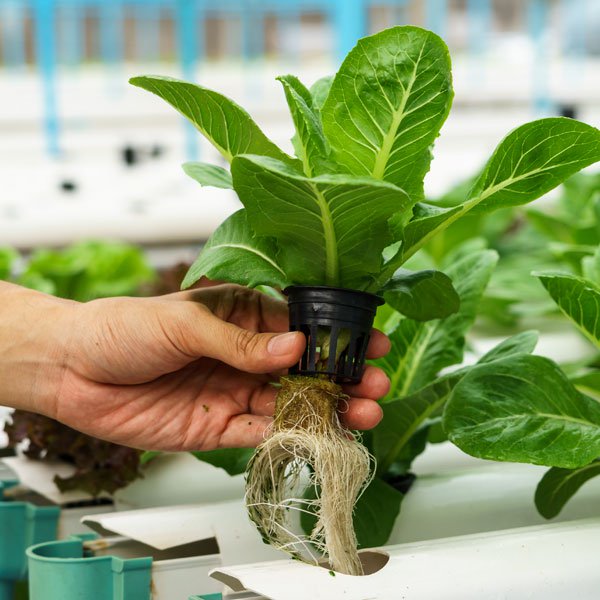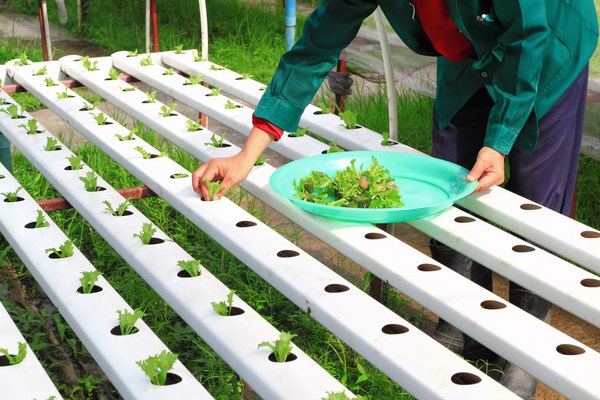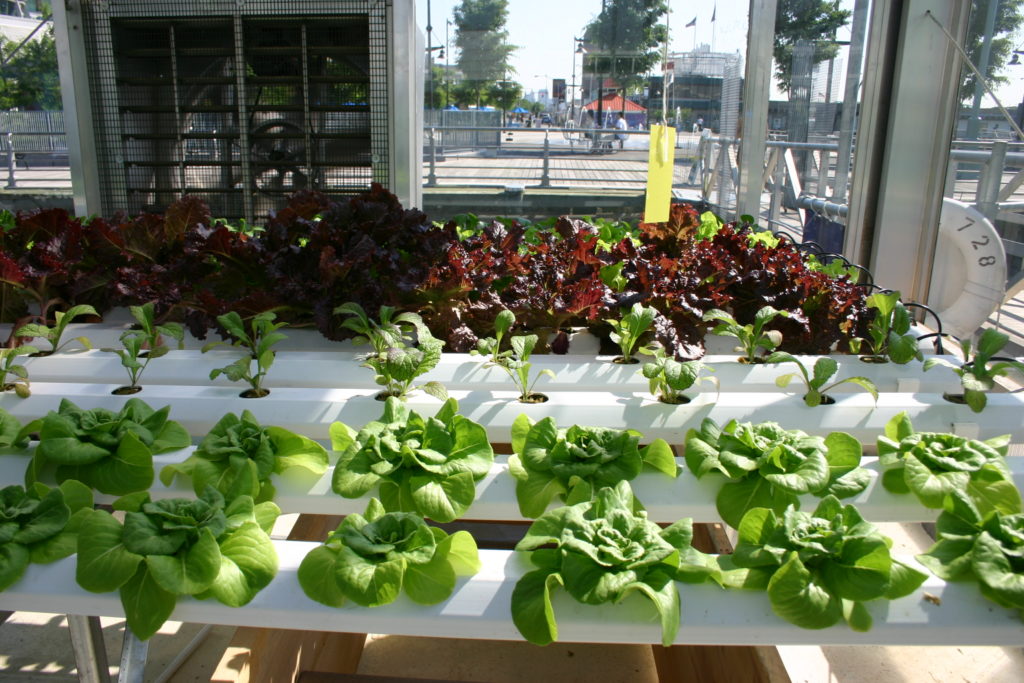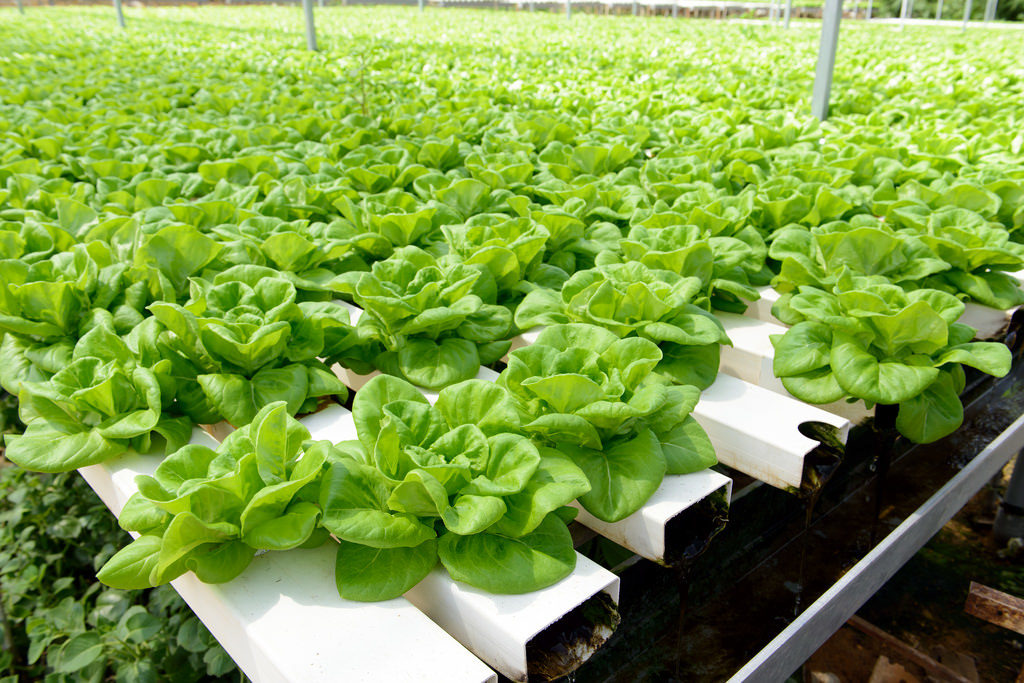
By Glenn Kern, CFSA Organic Policy Coordinator
(A) What exactly are hydroponic production systems?
As noted above, hydroponic production is one of multiple different methods of commercial crop production that are distinct from the traditional practice of growing plants to maturity in the open ground. The NOSB and NOP have long recognized the need to define and distinguish between these less traditional growing methods in order to determine whether some should be prohibited under the Organic label.
Though less prevalent on a commercial scale than they are today, hydroponic production systems were in use in the United States when the USDA Organic regulations were being drafted in the late 1990s, and both the NOSB and the NOP discussed them in the context of the Organic label. The final regulations, published by the NOP in December 2000, did not explicitly regulate hydroponics, and supplemental information published by the NOP during the rulemaking process indicated that allowing for the possibility of rule-compliant hydroponic systems was an intentional choice.
At present, a deepening problem of regulatory inconsistency demands the urgent need for additional clarification from the NOP. Without USDA rules that expressly address hydroponic and other container-based production methods, some USDA-accredited Organic certifying agencies have been willing to approve these non-traditional methods, while other certifying agencies have not.
What follows is a basic typological framework for the production systems that the NOSB and NOP are currently attempting to define and classify. Keep in mind that the definitions listed here are not found in existing law or USDA regulations—rather, they are proposed definitions from the NOSB and are by no means set in stone. It should also be stressed that within each category listed below there are in fact multiple distinct production models in use by commercial growers. An analysis of these many individual models is beyond the scope of this blog post. For readers who want to learn more about the range of container-based production systems being used today, I recommend starting with the 2016 Organic Hydroponic and Aquaponic Task Force report, which will be mentioned again in Part Three and is available here.
Without USDA rules that expressly address hydroponic and other container-based production methods, some USDA-accredited Organic certifying agencies have been willing to approve these non-traditional methods, while other certifying agencies have not.
(i) Container-based growing systems
In 2010, the NOSB made a formal recommendation to the NOP regarding the use of container-based production systems. As defined in that recommendation, a “container” is “any vessel and associated equipment used to house growing media and the complete root structure of terrestrial plants and to prevent the roots from contacting the soil or surface beneath the vessel, such as, but not limited to, pots, troughs, plastic bags, floor mats. etc.” The Crops Subcommittee’s pending proposals on container-based systems for the Fall 2017 meeting in Jacksonville use the same definition.
In other words, container-based growing systems involve growing plants somewhere other than in the ground. However, the “growing media” used in container-based commercial systems can vary significantly. For example, the containers could be filled with soil or a soil-and-compost mix. Alternatively, the containers could be filled with a completely liquid growing media. As will be made clear below, in the latter case, the production system would be considered both “container-based” and, by necessity, “hydroponic.”
For the purposes of this typological framework, the category of “container-based growing systems” encompasses each of the following sub-categories, all of which involve the production of crops in “vessels” used to prevent plant roots “from contacting the soil or surface beneath….” However, it’s important to note that there are container-based growing systems which do not fit into any of the categories listed below.
(ii) Hydroponic growing systems
At the Spring 2017 NOSB meeting, the Crops Subcommittee presented to the full Board a discussion document that included a proposed definition of “hydroponics.” The full Board did not vote on the proposed definition, and therefore no formal recommendation was made to the NOP regarding how such systems should be defined in the USDA Organic regulations.
Consequently, there is no current NOP definition of hydroponics. The NOSB has produced three slightly different definitions of hydroponics in recent years:
(a) In 2010, the NOSB made a formal rulemaking recommendation to the NOP in which “hydroponics” was defined as “[t]he production of normally terrestrial, vascular plants in nutrient rich solutions or in an inert, porous, solid matrix bathed in nutrient rich solutions.”
(b) In a Fall 2016 proposal, which neither accepted nor rejected by the full Board, the Crops Subcommittee defined “hydroponics” as “the growing of normally terrestrial vascular plants in mineral nutrient solutions with or without an inert growing media to provide mechanical support.”
(c) The definition of “hydroponics” presented by the Crops Subcommittee at the Spring 2017 meeting is “[t]he production of normally terrestrial, vascular plants in nutrient-rich solutions, or in a medium of inert or biologically recalcitrant solid materials to which a nutrient solution is added.” This definition encompasses both pure liquid hydroponic systems, in which plant roots are actually suspended in liquid, and “aggregate” hydroponic systems, in which plant roots are suspended in some sort of inert or recalcitrant substrate and are “bathed” in a liquid nutrient solution.
The Crops Subcommittee’s Fall 2017 proposal on hydroponics uses a definition that is notably different from the previous three. Rather than focusing on the type of growing media being used or the plants being cultivated, for the first time in a formal proposal, the Subcommittee has defined a hydroponic system according to the percentage of a crop’s total nitrogen requirement that is supplied using liquid and other outside fertilizer sources, as follows:
(d) “Hydroponics (for the purposes of this proposal)…[is defined as] any container production system that does not meet the standard of a limit of 20% of the plants’ nitrogen requirement being supplied by liquid feeding, and a limit of 50% of the plants’ nitrogen requirement being added to the container after the crop has been planted.”
Many production systems that allow plant roots to float freely in liquid nutrient solutions, which by design depend solely on this method for delivery of fertilization, would clearly fall within this definition. However, even systems that use some amount of soil or compost as growing media but which exceed the percentages listed above would be considered hydroponic.
(iii) Aquaponic growing systems
As with “hydroponics,” the NOSB has produced multiple definitions of “aquaponics” in recent years:
(a) The 2010 rulemaking recommendation from the NOSB described aquaponics as “systems [that] combine the features of both hydroponics and aquaculture. This is done by recirculating the effluent from fish tanks and using it as a source of nutrients for vegetables grown hydroponically, using sand or gravel as media. Nitrifying bacteria convert the fish effluent, primarily ammonia, to nitrite and then nitrate, which the plants can use.”
(b) In its Fall 2016 proposal to the full Board, the Crops Subcommittee defined “aquaponics” as “[a] system in which plants are grown in waste water from aquatic organisms, which in turn purify the water.”
(c) In its Spring 2017 discussion document and Fall 2017 proposal, the Crops Subcommittee has defined “aquaponics” as “a recirculating hydroponic system in which plants are grown in nutrients originating from aquatic animal waste water, which may include the use of bacteria to improve availability of these nutrients to the plants. The plants improve the water quality by using the nutrients, and the water is then recirculated back to the aquatic animals.” The Fall 2017 Proposal thus incorporates the new percentage-based definition of hydroponics.
Although the use of aquatic animals—usually fish—to produce available nutrients distinguishes aquaponic systems from other hydroponic systems, aquaponics is typically thought of as a subtype of hydroponics.
(iv) Aeroponic growing systems
“Aeroponics” is defined the same way in the Fall 2017 Crops Subcommittee proposal, Spring 2017 Subcommittee discussion document, the 2016 Subcommittee proposal, and the 2010 NOSB rulemaking recommendation: “a variation of hydroponic [production] in which plant roots are suspended in air and misted with nutrient solution.”
(B) The current regulatory situation
According to §6512 of the Organic Foods Production Act (“Other production and handling practices”), “if a production or handling practice is not prohibited or otherwise restricted under [OFPA], such practice shall be permitted unless it is determined that such practice would be inconsistent with the applicable organic certification program.” Any such determination would be in the form of rulemaking by the National Organic Program.
As noted by the NOSB Crops Subcommittee in its Spring 2017 discussion document, “[t]he National Organic Standards Board (NOSB) has taken up the issue of hydroponics several times in the past and has made several recommendations to the National Organic Program. To date, the NOP has not undertaken rulemaking based on any of the NOSB recommendations.”
Consequently, the current regulatory position of the NOP is that hydroponic production systems are eligible for Organic certification if production is accomplished in full compliance with OFPA and the USDA Organic regulations. However, without additional regulations or guidance from the NOP spelling out what exactly “full compliance” means in the context of hydroponic or other container-based production systems, certifying agencies have been left to make the determination themselves. As noted above, some certifying agencies have concluded that hydroponics can be Organic, while others have concluded that it cannot.
According to a 2016 survey of Organic certifiers conducted by the NOP, a total of 17 agencies responded that they were willing to certify hydroponic and aquaponic operations (out of a total of 80 certifiers accredited by the USDA). At that time, there were 30 certified hydroponic operations, 22 certified aquaponic operations, and 69 “other” certified container-based operations (some of which might be classified as hydroponic under the Fall 2017 definitions).
Though opinions about hydroponics vary among members of the NOSB and the wider community of Organic producers, handlers, and consumers, everyone seems to be in agreement that the regulatory uncertainty surrounding certification of hydroponics is confusing and risks undermining the public’s trust in the Organic label. Yet, counterbalancing the need for the NOP to develop additional regulations quickly is the need for such regulations to be comprehensive, well-researched, and consistent with the spirit and text of OFPA.
Coming up next week
Please don’t hesitate to email me at glenn@carolinafarmstewards.org with comments or questions, and thanks very much to those of you who have already gotten in touch to voice your opinion. If you want to know more about hydroponics and the Organic label, make sure to stay tuned for next week’s post, listed below.
Part Three : October 24
- What arguments are being made in opposition to and in support of allowing hydroponics to be certified Organic?
- What have the NOSB and the NOP done in the past to address this issue?





